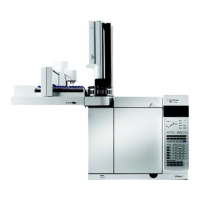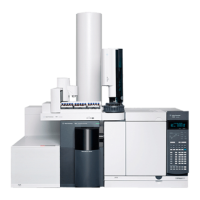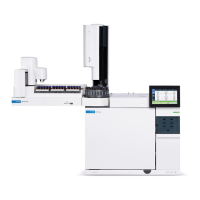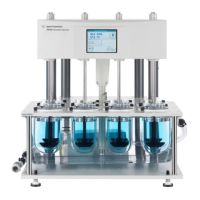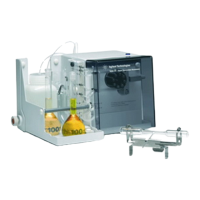86 Advanced Operation Manual
3 Inlets
• Raise the inlet initial temperature to vaporize more
solvent and allow more to be eliminated. This also
increases the loss of volatile analytes since their vapor
pressures also increase.
To improve recovery of low boiling analytes
• Reduce inlet temperature to lower the vapor pressure of
the analytes and trap them more effectively. This also
reduces solvent vapor pressure and more time will be
needed to eliminate it.
• Use a retentive packing in the liner. Materials such as
Tenax permit higher recovery of volatile analytes but may
not release higher boiling compounds. This must be
considered if quantitation on these high boiling peaks is
desired.
• Leave more solvent in the liner. The solvent acts as a
pseudo stationary phase and helps retain volatile
analytes. This must be balanced against the detector’s
tolerance for solvent.
An example—continued
The single injection example shown on the last few pages
makes it clear that a 10 μL injection does not overload the
glass wool packed liner. This means that multiple 10 μL
injections are possible.
It was decided to make 10 injections per run, each of 10 μL
size. This would increase analytical sensitivity substantially.
No adjustments were made to improve recovery of the low
boilers since the purpose of this analysis was to detect and
measure the high boiling components.
After timing a trial set of 10 injections, the total time for the
multiple injection set was measured to be approximately
1.3 minutes. The following timing changes were made:
Tabl e 20 Modifications
Parameter Increased from To
Inlet Init time 0.3 minutes 1.6 minutes
Vent end time 0.2 minutes 1.5 minutes
Purge time 2.0 minutes 3.0 minutes
Oven Init time 2.5 minutes 3.0 minutes

